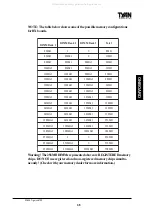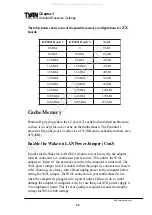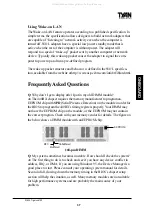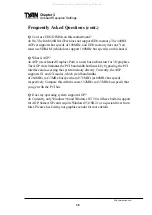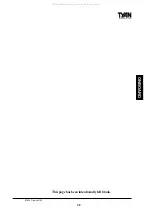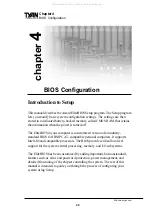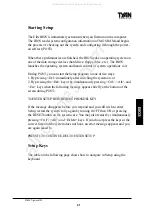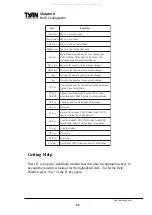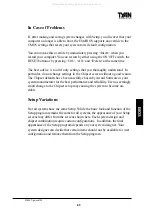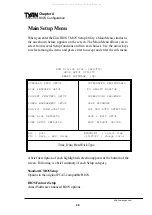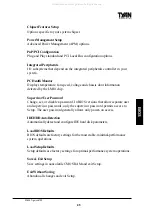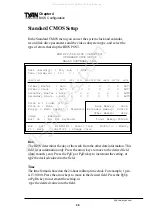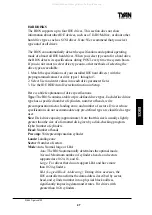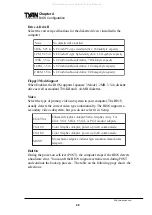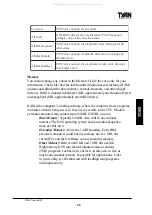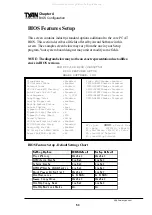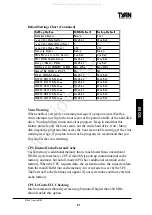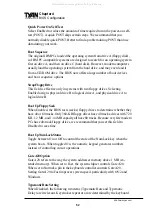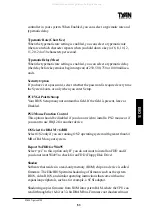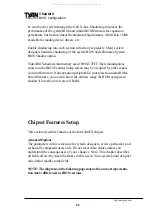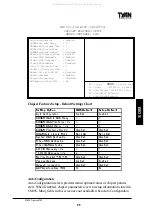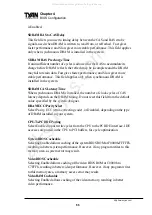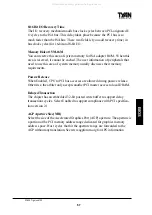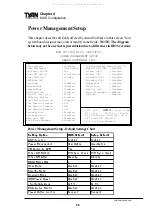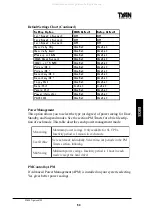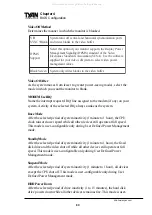
S1894 Tigercub 100
49
BIOS
s
r
o
rr
e
o
N
.s
r
o
rr
e
y
n
a
r
o
f
p
o
ts
t
o
n
s
e
o
d
T
S
O
P
s
r
o
rr
e
ll
A
d
n
a
s
p
o
ts
T
S
O
P
,r
o
rr
e
l
a
t
a
f
-
n
o
n
y
n
a
st
c
e
t
e
d
S
O
I
B
e
h
t
fI
.
n
o
it
c
a
e
v
it
c
e
rr
o
c
e
k
a
t
o
t
u
o
y
st
p
m
o
r
p
d
r
a
o
b
y
e
K
t
u
B
,ll
A
ll
a
r
o
f
s
p
o
ts
t
u
b
,r
o
rr
e
d
r
a
o
b
y
e
k
a
r
o
f
p
o
ts
t
o
n
s
e
o
d
T
S
O
P
.s
r
o
rr
e
r
e
h
t
o
e
tt
e
k
si
D
t
u
B
,ll
A
r
o
f
s
p
o
ts
t
u
b
,s
r
o
rr
e
e
v
ir
d
e
tt
e
k
si
d
r
o
f
p
o
ts
t
o
n
s
e
o
d
T
S
O
P
.s
r
o
rr
e
r
e
h
t
o
ll
a
y
e
K
/
k
si
D
t
u
B
,ll
A
s
p
o
ts
t
u
b
,r
o
rr
e
k
si
d
r
o
d
r
a
o
b
y
e
k
a
r
o
f
p
o
ts
t
o
n
s
e
o
d
T
S
O
P
.s
r
o
rr
e
r
e
h
t
o
ll
a
r
o
f
Memory
You cannot change any values in the Memory fields; they are only for your
information. The fields show the total installed random access memory (RAM)
and amounts allocated to base memory, extended memory, and other (high)
memory. RAM is counted in kilobytes (KB: approximately one thousand bytes)
and megabytes (MB: approximately one million bytes).
RAM is the computers working memory, where the computer stores programs
and data currently being used, so they are accessible to the CPU. Modern
personal computers may contain up to 64 MB, 128 MB, or more.
Base Memory:
Typically 640 KB. Also called conventional
memory. The DOS operating system and conventional applica
tions use this area.
Extended Memory:
Above the 1-MB boundary. Early IBM
personal computers could not use memory above 1 MB, but
current PCs and their software can use extended memory.
Other Memory:
Between 640 KB and 1 MB; often called
High memory. DOS may load terminate-and-stay-resident
(TSR) programs, such as device drivers, in this area, to free as
much conventional memory as possible for applications. Lines
in your config.sys file that start with loadhigh load programs
into high memory.
All manuals and user guides at all-guides.com

